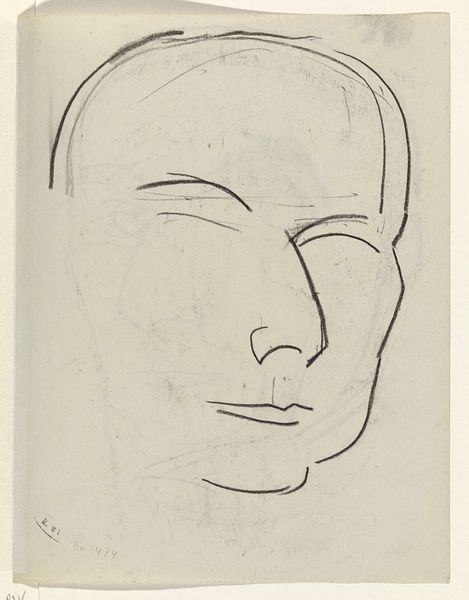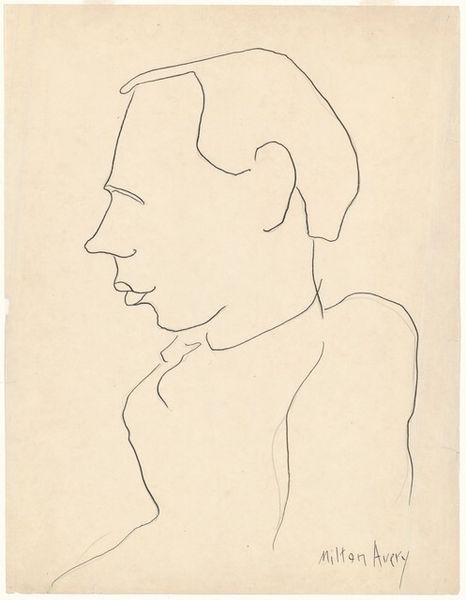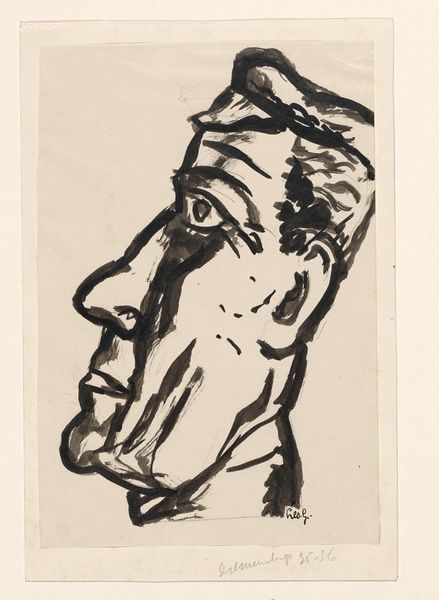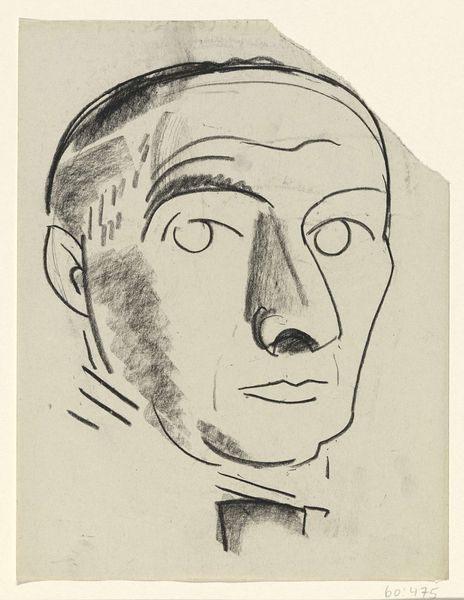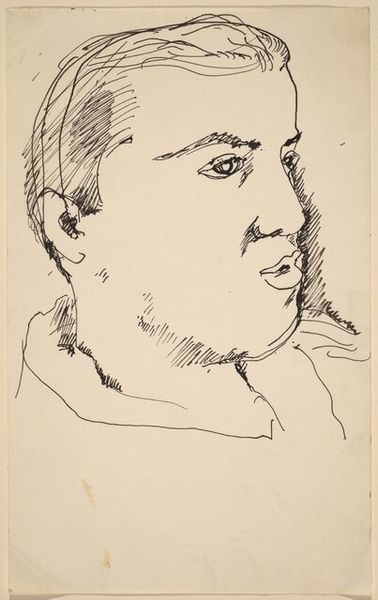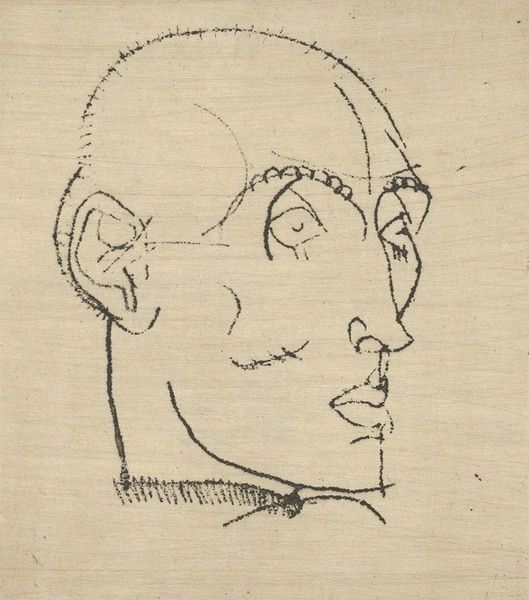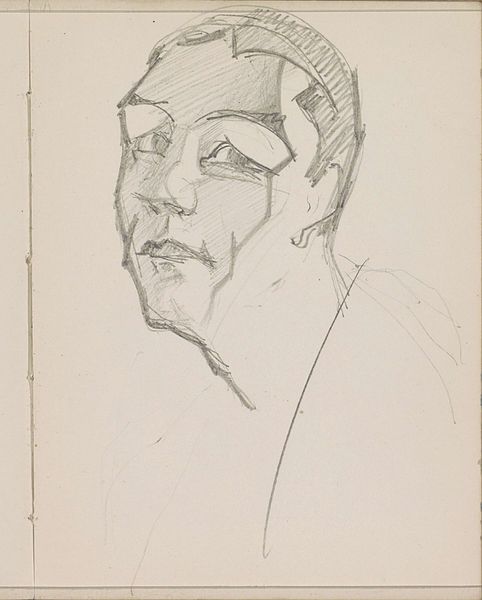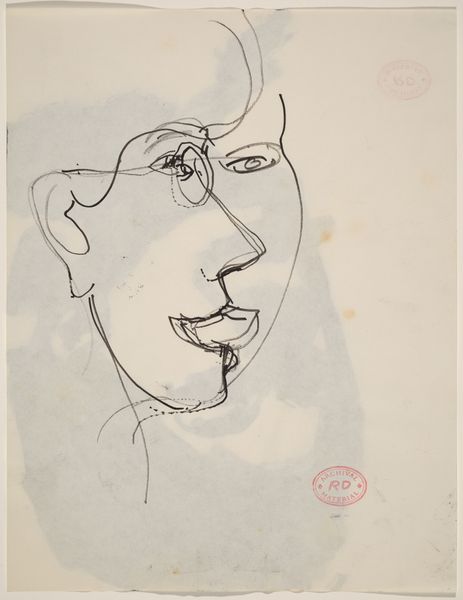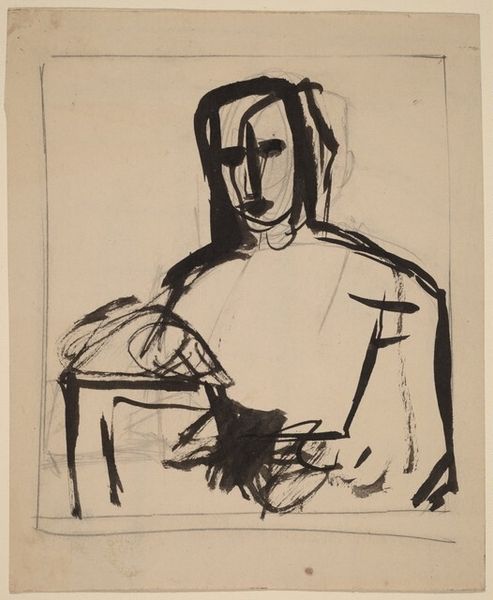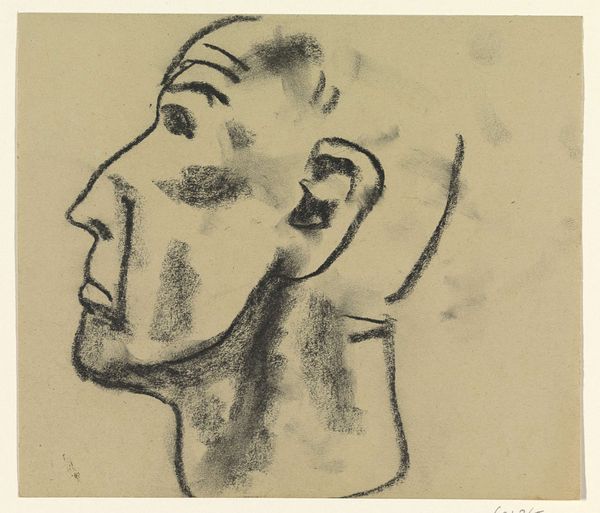
Dimensions: sheet: 106.4 × 89.5 cm (41 7/8 × 35 1/4 in.)
Copyright: National Gallery of Art: CC0 1.0
Editor: Right in front of us, we have John Wilson’s “Study for Eternal Presence,” a drawing created in 1972. The stark black lines on the white paper really catch the eye. It feels almost unfinished, a sketch, yet incredibly powerful. What strikes you most about this piece? Curator: Well, considering Wilson's involvement with the Black Arts Movement, I immediately consider the material implications of representing Blackness through a medium like drawing. The lines, stark and bold, are tools, you see, not just aesthetic choices. He's using the very act of drawing, the labor involved, to assert presence. Look at the dashed lines across the face. What do those suggest to you? Editor: They seem to suggest something under construction or a planned sculpture. Curator: Precisely. He’s actively constructing identity, rather than passively representing it. Think about the paper itself, a commodity, transformed by Wilson's hand and his political convictions. This isn’t just a portrait; it’s an assertion of cultural identity using the means at hand, a challenge to the dominant narratives of representation. The material conditions, the available resources, inform the very essence of the work. Editor: So, you are seeing it as a deliberate, material act, imbuing even a simple sketch with political meaning through the process of creation. How does the title “Eternal Presence” fit into this? Curator: "Eternal Presence" isn't just about existing, but about a sustained visibility achieved through active construction. It speaks to the enduring labor and materiality required to maintain a presence in the face of erasure. Editor: I hadn't considered the "active construction" element so directly linked to the materials and method. Curator: It highlights the socio-political contexts of artistic production, reminding us that materials and processes are never neutral. They are active participants in the dialogue between art and society.
Comments
No comments
Be the first to comment and join the conversation on the ultimate creative platform.

